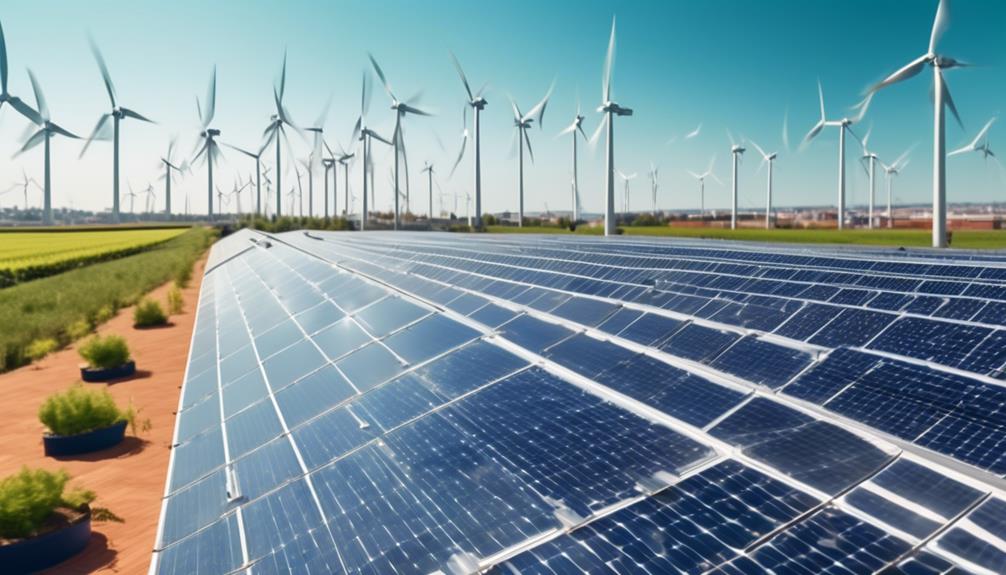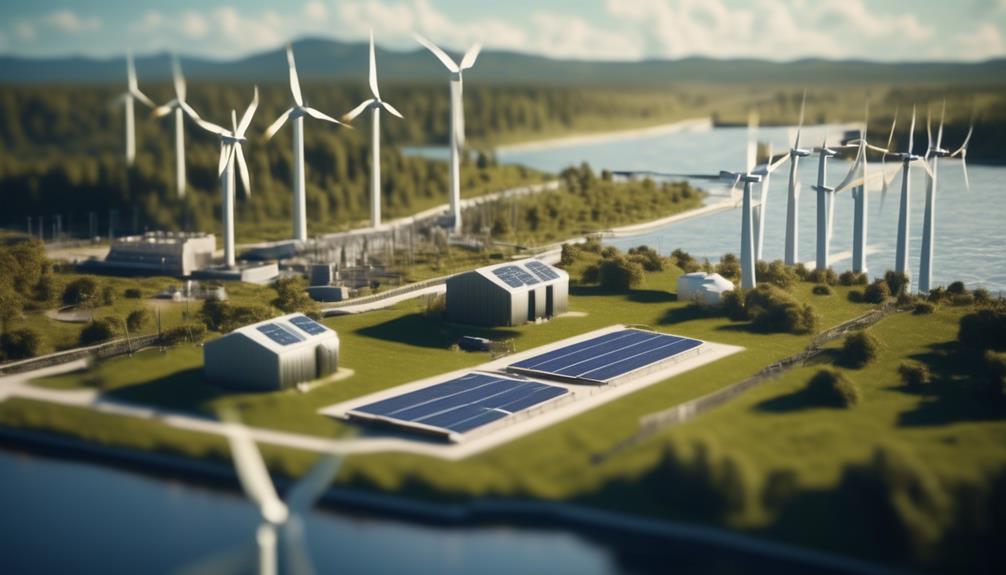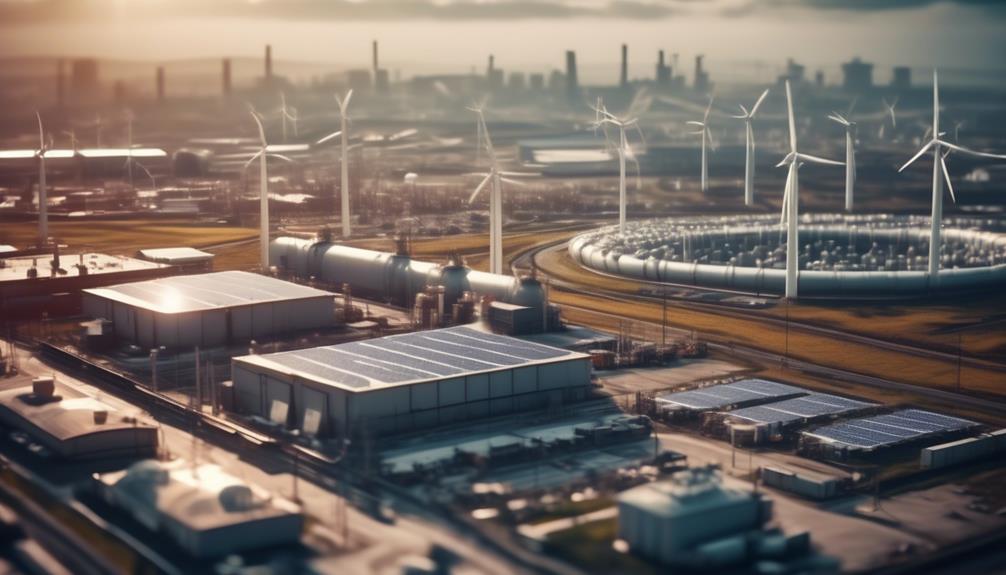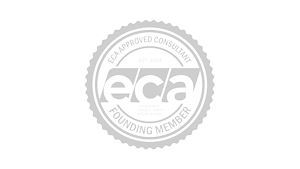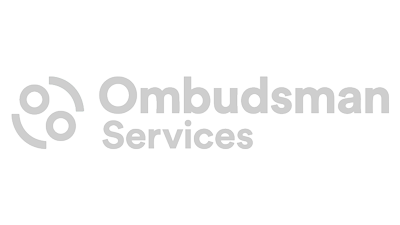In today’s ever-evolving business landscape, companies are increasingly aware of their role in promoting sustainability and environmental stewardship. As you navigate the complexities of corporate responsibility, the quest to reduce energy waste stands out as a critical endeavour. This pursuit not only aligns with global sustainability goals but also offers a pathway to enhanced operational efficiencies and cost savings.
Amidst the myriad of strategies and solutions, pinpointing effective measures for energy waste reduction can seem daunting, yet it is a journey worth embarking on for the forward-thinking business.
Understanding the hurdles—ranging from initial investment costs to the challenge of integrating new technologies and practices within established systems—is the first step towards transformation. With a foundation built on years of navigating these very waters, the insights shared here are designed to illuminate the path forward. Tailored for businesses eager to make a meaningful impact, this article delves into practical strategies that resonate with your aspirations.
As we explore these best practices together, you’ll find the guidance needed to not only reduce your carbon footprint but also to emerge as a leader in corporate sustainability. Continue reading to discover how your organisation can effectively contribute to a greener future, setting a benchmark in the industry and fostering a culture of responsibility and innovation.
Energy Audit and Assessment
Energy audits and assessments are essential for identifying energy inefficiencies and areas for improvement within corporate facilities. By conducting regular energy audits, organisations can pinpoint sources of energy waste and prioritise opportunities to maximise energy efficiency. These assessments provide a comprehensive understanding of energy usage patterns, allowing for informed decisions to be made regarding energy costs and reduction of the organisation’s carbon footprint.
Utilising energy management systems is crucial in automating the powering up of equipment and optimising start-up and shut-down procedures. This approach enables the implementation of automated scheduling based on demand and operating hours, effectively reducing energy waste. Additionally, the incorporation of remote monitoring and control of equipment allows for the identification of potential problems and the optimisation of energy consumption patterns.
The data derived from energy audits and assessments serve as a foundational tool for enhancing energy efficiency. Organisations can leverage this information to implement targeted strategies that not only reduce energy waste but also lead to significant cost savings. Ultimately, the insights gained from energy audits and assessments empower organisations to make strategic decisions that align with their sustainability objectives and drive operational excellence.
Implementing Energy-Efficient Technologies
With a focus on optimising operational efficiency and reducing energy consumption, the integration of energy-efficient technologies is a pivotal strategy for modern corporate facilities. Implementing energy-efficient technologies can lead to significant energy savings and contribute to waste reduction.
Here are some practical approaches to implementing energy-efficient technologies:
- Staggered Schedule: Implement a staggered schedule when powering up equipment to reduce energy waste and lower costs.
- Energy Management Systems: Use energy management systems to automate the powering up process and conserve energy.
- Alert Notifications: Leverage text and email message alerts to notify staff of equipment issues, enabling prompt action to minimise energy wastage.
- Just-in-Time Replacement: Transition to a just-in-time equipment replacement strategy to ensure that energy-efficient technologies are continuously integrated into the facility.
- Remote Monitoring: Utilise data from remote monitoring to make informed decisions and optimise energy usage, aligning with the ENERGY STAR Portfolio to maximise energy savings.
Employee Engagement and Training
To ensure the successful implementation of waste reduction and recycling programmes, engaging and educating employees on best practices is crucial for aligning organisational goals with sustainable waste management activities.
Employee engagement is a key driver in waste reduction efforts, as they play a significant role in identifying opportunities to reduce waste, recycle effectively, and contribute to energy waste reduction.
Training programmes can help employees understand the importance of waste reduction, provide them with the necessary knowledge and tools to implement best practices, and empower them to actively participate in waste management activities.
By involving employees in waste reduction initiatives, organisations can harness their collective efforts to minimise waste generation, identify markets for recovered materials, and evaluate recycling and composting options.
Furthermore, employee engagement can be initiated through kick-off recycling programmes with senior leader involvement, creating a sense of ownership and responsibility within the workforce.
Tracking waste management activities and quantifying greenhouse gas emissions impacts can also serve as a means to educate and engage employees, by demonstrating the tangible benefits of their contributions to waste reduction.
Setting Clear Energy Consumption Goals
Setting specific and measurable goals for reducing energy consumption is an essential step in guiding the organisation towards sustainable and efficient energy management practices. When setting clear energy consumption goals, it is crucial to:
- Clearly define specific energy consumption reduction goals to provide a clear target for the organisation to work towards.
- Set measurable and achievable energy reduction targets to track progress and success.
- Involve key stakeholders in the goal-setting process to ensure alignment and commitment across the organisation.
- Regularly review and assess progress towards energy consumption goals to make necessary adjustments and improvements.
- Communicate energy consumption goals and progress transparently to employees and stakeholders to foster accountability and awareness.
Monitoring and Analysing Energy Usage Data
How can organisations effectively employ energy monitoring and management systems to analyse and optimise energy usage in office common areas?
To enhance energy efficiency, businesses can utilise advanced energy monitoring and management systems to gain insight into real-time energy usage data. By employing data analytics, organisations can identify usage patterns and make informed decisions to optimise energy consumption in office common areas.
Automated controls based on occupancy can be implemented to manage and reduce energy consumption, providing comprehensive oversight and control over energy usage. This allows businesses to identify areas for further optimisation and cost savings.
Upgrading Building Insulation and Lighting
Organisations seeking to further enhance their energy efficiency strategies, beyond monitoring and analysing energy usage data, can achieve substantial reductions in energy consumption by upgrading building insulation and lighting to improve overall sustainability and cost savings.
- Upgrading building insulation can significantly reduce heat loss and energy consumption, leading to long-term cost savings and environmental sustainability.
- Installing energy-efficient lighting systems, such as LED bulbs and motion sensors, can lower electricity usage in buildings, contributing to enhanced energy efficiency.
- Properly installed and maintained building insulation improves thermal comfort and reduces the need for excessive heating or cooling, thus reducing energy costs.
- Upgrading building insulation and lighting is a practical practice for enhancing the energy efficiency and overall sustainability of a building, contributing to lower operational costs.
- Efficient lighting systems have a longer useful life, reducing replacement and maintenance costs, making them a cost-effective choice for organisations aiming to reduce energy consumption and costs.
Adopting Renewable Energy Sources
Adopting renewable energy sources is a critical strategy for organisations looking to enhance their sustainability and reduce their environmental impact while also achieving long-term cost savings and energy efficiency.
To implement this best practice, companies should consider various sustainable alternatives such as solar, wind, hydro, and geothermal energy.
Conduct a thorough evaluation of the feasibility and cost-effectiveness of installing renewable energy systems for your facility. It’s essential to leverage government incentives and rebates to offset the initial investment in renewable energy technologies.
Partnering with renewable energy providers to directly source clean energy for operations is another effective approach.
Furthermore, educating and engaging employees to support and advocate for the adoption of renewable energy within the organisation is crucial for successful implementation.
By integrating renewable energy sources into office operations, companies can significantly contribute to waste management, energy efficiency, and overall environmental sustainability.
This transition aligns with best practices and demonstrates a commitment to corporate social responsibility.
Regular Maintenance and Equipment Upgrades
Shifting focus from the adoption of renewable energy sources, ensuring regular maintenance and upgrading equipment are integral steps for corporate entities aiming to enhance energy efficiency and reduce waste in their operations. To achieve these goals, consider the following best practices:
- Implement scheduled maintenance to ensure equipment operates at optimal efficiency and minimise energy consumption.
- Assess office equipment performance regularly and consider upgrades to the latest energy-efficient models for long-term energy savings.
- Incorporate energy efficiency into equipment procurement processes and prioritise the selection of energy-saving options.
Upgrade lighting systems by replacing traditional bulbs with energy-efficient alternatives to reduce energy waste and operational costs.
- Proactively identify opportunities to upgrade to energy-efficient technologies, which can result in substantial cost savings and energy waste reduction.



